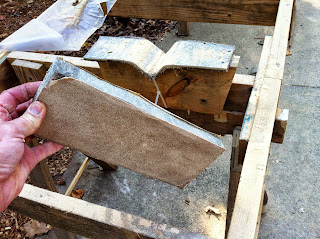The Sooty progress has been nil of late. The food and shelter thing keeps pressing its demands. However, I was able to steal away a week to journey on my favorite bay and thought I'd share some photos and a last day video as some recompense for build regression.
 |
| Reaching homeward. |
I do believe this is my favorite time of the year for boating. The air is crisp. The light quality is brilliant. The wind generally fair and, of course, there are those colors. Add to that the passing of Labor Day turns off the traffic of other boaters and quaint towns along coast can once again hint at a long ago charm. Without brash tourists at every turn, the less frequent sailor is now welcomed.
 |
| Sunday afternoon. |
 |
| Sunday evening. |
 |
| Monday morning. |
My father once said power boating is about points "A" and "B". Sailing is about the journey in between. While I heartedly agree, there were a couple "points" where we lingered and just enjoyed the world. One was the town of Onancock on the Eastern Shore and the other, Reedville on the western shore's Great Wicomico. Both seem to be hanging in limbo. Steamboat ferries and oyster boom days are long gone. Far too many outsiders have moved in, but thankfully the boutique rabble had gone with the summer. What is left is a genuine charm and proud history for any who'd slow down to take notice.
 |
| The replica "Godspeed" at Onancock's wharf. |
 |
| Some late afternoon essentials on the Occohannock Creek. |
 |
| A Reedville Captains home. Classic form. |
 |
| Lovely skiff details. |
 |
| Scenery on Cockrell Creek. |
 |
| Reedville's landmarks. |
 |
| Part of Reedville's (Fleeton's) menhaden fleet. |
 |
| Hard workers of the menhaden fleet. |
 |
| Our neighbors in Reedville. |
 |
| Me first matey. None better. |
So, there you have it, just a taste of a poorly photographed week, but perhaps you get a hint of the beauty experienced. I leave you with a portion of our last sail home. Enjoy!























